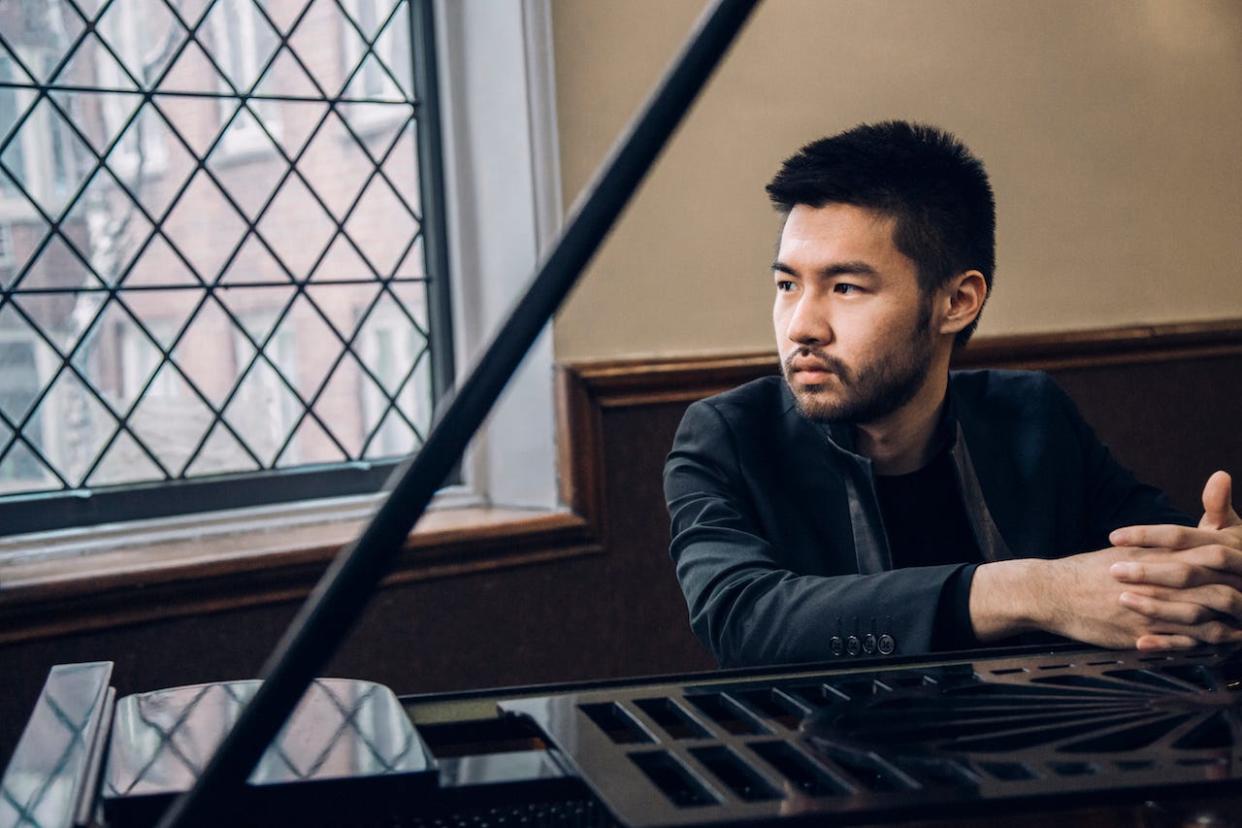Jacksonville Symphony to celebrate a century of 'Rhapsody in Blue' at January shows

- Oops!Something went wrong.Please try again later.
- Oops!Something went wrong.Please try again later.
- Oops!Something went wrong.Please try again later.
We begin the new year with a program celebrating the 100th birthday of George Gershwin’s revolutionary "Rhapsody in Blue."
This extraordinary piece, part symphony, part concerto, part big-band swing session, has an amusing genesis. In January 1924, Gershwin had the unsettling experience of reading in the New York Tribune that he was already at work on a “jazz concerto” for a concert by the bandleader Paul Whiteman that promised to broaden concertgoers’ conception of what serious American music could be. Gershwin was not aware that he was at work on any such piece, and a phone call to Whiteman revealed that he’d been thinking of asking Gershwin for some time, but the date of the concert had been moved up to avoid a conflict with a rival conductor. Amused, Gershwin agreed to write the piece at lightning speed but asked that the piece be more of a free-form work, slightly shorter than a concerto, and for a small complement of instruments.
Originally written for a jazz band, the piece was orchestrated by Gershwin’s in-house arranger, Ferde Grofé, famous for his "Grand Canyon Suite." Grofé remembers the composition process: “I practically lived too in their [Gershwin’s] uptown Amsterdam and 100th Street apartment, for I called there daily for more pages … He and his brother Ira had a back room where there was an upright piano, and that is where 'Rhapsody in Blue' grew into being.”
Gershwin described how the music was born in his mind as he traveled from New York to Boston: “It was on a train that I suddenly heard — and even saw on paper — the complete construction of the 'Rhapsody in Blue,' from beginning to end. I heard it as a sort of musical kaleidoscope of America — of our vast melting pot, of our unduplicated national pep, of our metropolitan madness. By the time I reached Boston, I had a definite plot of the piece, as distinguished from its actual substance.”
The piece was introduced barely a month after Gershwin began it in an arrangement for big band. Grofé would later orchestrate the work for full orchestra. At the first rehearsal, the clarinetist elided the written opening scale into a single rising glissando — and an iconic American sound was born.
After a swooning, laconic opening, Gershwin presents us with a bluesy tune, a march and finally an indulgently romantic theme in the strings. There’s something fresh and new about the confident swagger of the music.
"Rhapsody in Blue" succeeded in bringing jazz as a serious genre into spaces usually reserved for classical with Gershwin opening the door for generations of classical composers to dip into jazz for inspiration. Even the greatest modernist composer of the day, Igor Stravinsky, would later write his “Ebony Concerto” for clarinet and jazz band — unthinkable without Gershwin’s example.
For our performances of this extraordinary work, we’re welcoming back Jacksonville favorite Conrad Tao. A unique pianist, he brings incredible elan and style to everything he plays, and as someone who’s deeply familiar with the Great American Songbook, he’s the perfect exponent of "Rhapsody in Blue." I hope you’ll join us at Jacoby Symphony Hall on Jan. 5 and 6 as we celebrate the birthday of this famed piece of American musical culture.
Courtney Lewis is music director for the Jacksonville Symphony.
This article originally appeared on Florida Times-Union: Jacksonville Symphony to celebrate 'Rhapsody in Blue' in January

